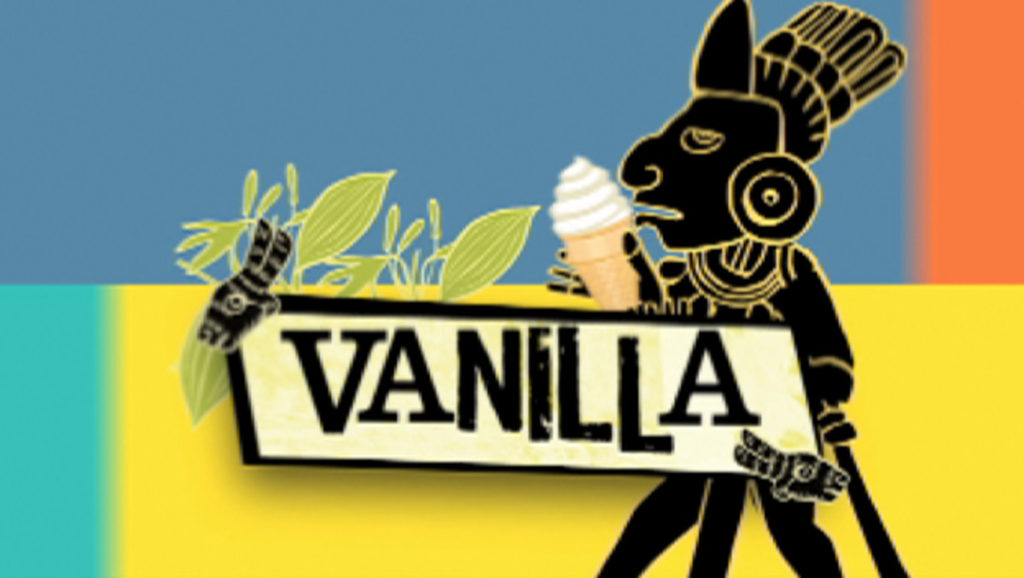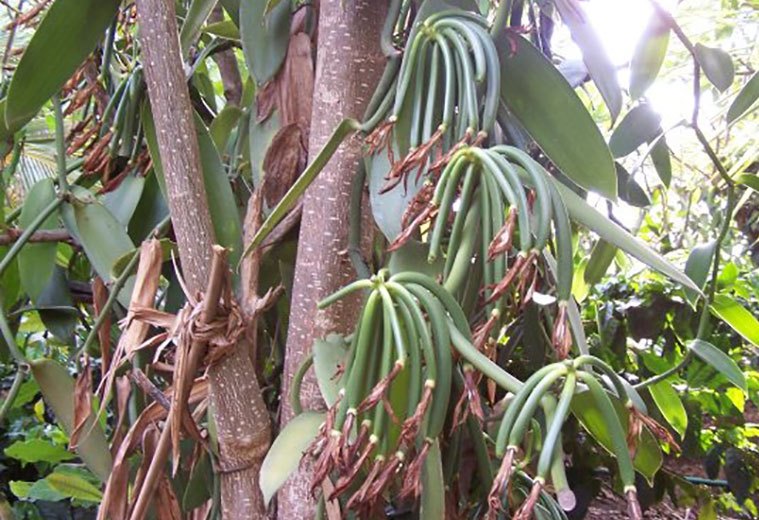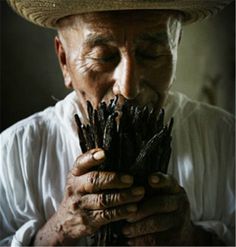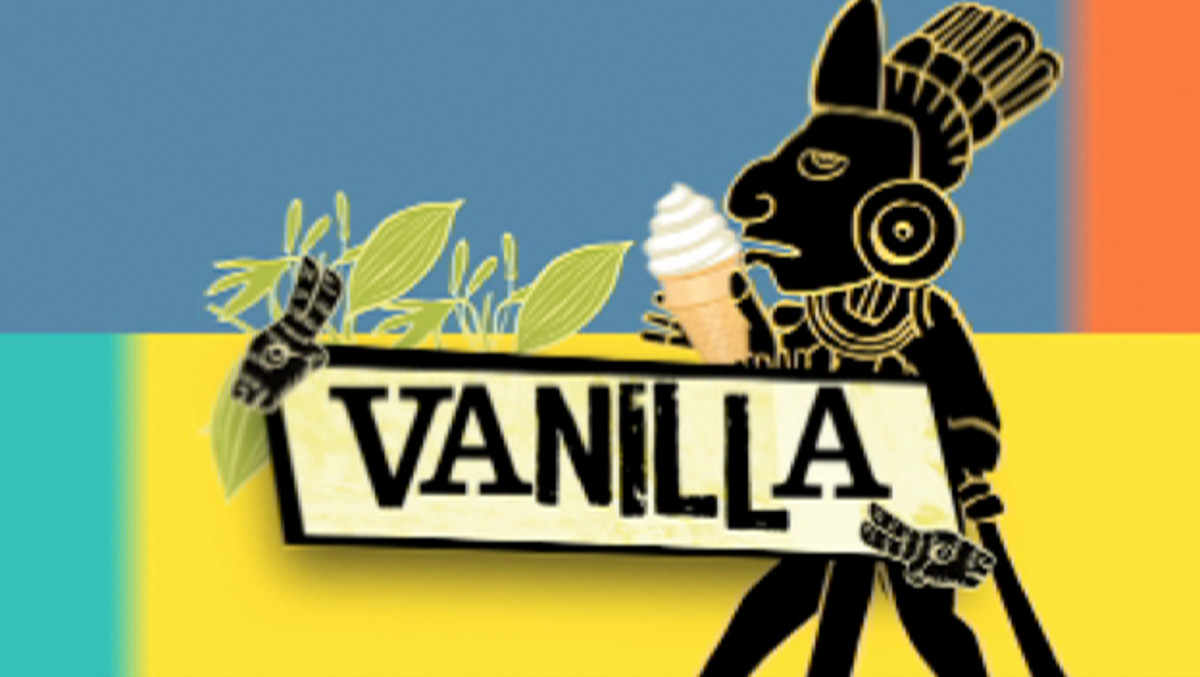It is difficult to gambol about San Miguel de Allende and not be asked if you want to buy a little container of vanilla. I was intrigued, as of all the flavors, why is the most bland sold so exclusively?
I learned vanilla is the only edible fruit of the 25,000 species of orchid. The indigenous tribe called Totonacs living in Veracruz are credited as its first cultivators.

The Totonacs considered vanilla a sacred herb and used it in faith-based events as a perfume, protection against evil and medicine, but rarely as a flavoring. By the early 1400s, the Aztecs added to vanilla’s mystique by combining it with chocolate in the corn based drink, atole.
When the Spanish explorer, Hernan Cortez, first met Emperor Montezuma he was offered a drink mixing chocolate and vanilla. Cortez inquired as to its special original flavor and fragrance; he was told it was vanilla (Little Sheath) which describes the shape of the vanilla pod. Cortez was so impressed that he returned to Spain with a supply of vanilla beans to add this special flavor and fragrance to the King’s palate.

Because of the rarity and extraordinary cost in shipping, vanilla soon became the exclusive beverage of all European aristocrats and the favorite flavor of Queen Elizabeth the first.
During the next 300 years, Mexican vanilla was transplanted to various sub-tropical regions throughout the world, without success.

Vanilla, a climbing orchid vine often 300 feet in length, grew beautiful foliage and flowers in all of its new subtopic locations, but never produced any vanilla pods. A mystery to the world until 1836 when realized the orchid blooms were visited by a small bee only found in the forests near Veracruz during the five hours or less the orchid bloom lived. This specialized little bee provided the pollination which produced the fruit! Only in Mexico is the bee found making the very existence of vanilla seem like an evolutionary long shot.
The pollinated orchid will produce a long green bean in a few weeks, but the bean must remain on the vine for nine months, just like a human baby, to develop its complex flavor and fragrance profile. Yet when the beans are harvested, they have neither flavor nor fragrance until they go through an arduous curing and drying process.

Methods of curing and drying vary, but in all cases, the pods are heated in ovens or hot water. The beans are then placed in the sun each morning for weeks, sometimes months, before being placed in large wooden boxes and allowed to sweat. The beans will lose nearly 80% of the original moisture content before their more than 250 natural flavor and fragrance components are completely developed creating the intoxicating aroma of vanilla drying. The entire process from pollination to shipment takes about one year.
By the late 1800s not only was vanilla the established flavor of choice for ice cream, but it was an essential ingredient in soft drinks including Coke.

In 1900 97% of the terrain near VeraCruz was tropical forest. By 1960 less than 5% of the forest was left. Instead Madagascar started producing 75% of vanilla worldwide with the invention of a hand-held toothpick-like device enabling it to mimic the bees and pollinate the orchid.
Vanilla is the second most expensive spice (after saffron) due to the extensive labor required to grow, harvest, and cure the vanilla beans. Vanilla costs more per ounce than silver making it a shame the Conquistadors didn’t focus on harvesting vanilla rather than mining silver!

Today folks like vanilla nearly three times better than chocolate which surprised me (being from Hershey, PA) but whom am I doubt the folks at the International Ice Cream Association?
Mexico’s total production of vanilla today is about 2,000 metric tons, which is a drop in the bucket when it comes to vanilla’s demand. Ninety nine percent of vanilla-flavored products on the market, from vanilla-flavored vodka to vanilla wafers and vanilla pudding, don’t actually contain vanilla.
Synthetic vanilla is twenty-fold cheaper to produce than real vanilla and sold ten times more often. If you’re nibbling on something vanilla-flavored or sniffing something vanilla-scented, chances are that you’re enjoying synthetic vanilla.

The Mexican National Vanilla Product Committee declared earlier this year that “95% of vanilla consumed in Mexico is artificial.” So if your vanilla purchase wasn’t costly, it probably wasn’t real vanilla.
by Joseph Toone
- TripAdvisor’s top tour guide in San Miguel de Allende with History and Culture Walking Tours and Joseph Toone Tours.
- Amazon’s best selling author of the San Miguel de Allende’s Secrets book series on making your adventures around town unique.
- Creator of the Maria Dolls coloring book helping indigenous doll makers.

